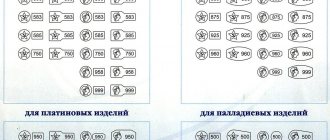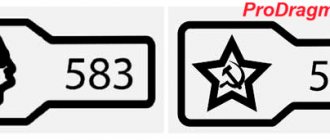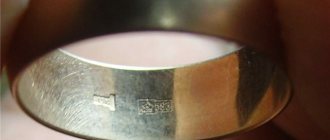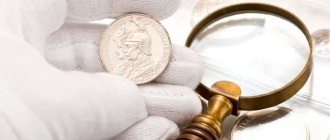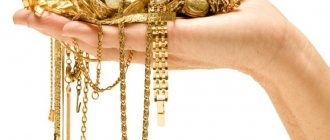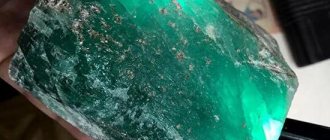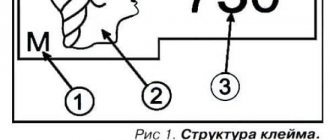Post updated: Oct 9, 2020
Very rarely gold is used in its pure form. Usually the product we call gold consists of the precious metal itself and the so-called alloy, that is, an admixture of other metals. Additives are included in the composition of gold to improve endurance and density, because gold in its pure form is very soft. Pure metal wears out quickly, and products made from it are very easy to scratch or break. High-quality products have a mark on the gold, which we will discuss later.
Even in ancient times, it was calculated that the best impurities for gold were silver and copper. Well, samples began to be used to indicate the gold content in the alloy.
Sample is the main indicator of impurities in a product, but stamps also serve this purpose - marks that are placed in control institutions and guarantee the presence of precious metal in the alloy.
In France, the first hallmark was placed in 1275, but in Russia, the first hallmark appeared on a product in Moscow in 1651-1652. It looked like a double-headed eagle with a date written in Slavic letters, and its purpose was to demonstrate the silver standard. Assays in the modern sense were introduced by Peter the Great in his decree of February 13, 1700, which established 4 assays each for gold and silver.
Why do you need a sample on jewelry?
Such a concept as “sample” appeared in jewelry when the need to control the consumption of precious metals and their content in various alloys was recognized.
The mark determined the proportion of precious metal in the alloy from which a particular product was made. It is impossible to obtain strong and durable jewelry that is resistant to deformation from pure precious metal, so jewelry and other items are made from alloys.
A precious metal alloy may include zinc, copper, silver, nickel and other metals that are responsible for certain properties and characteristics, including the color of the product. Metals added to an alloy are called alloys. Knowing what types of precious alloys there are, you can easily determine the quality of a particular piece of jewelry.
Popular gold samples
In our country there are five levels of quality of gold products.
375th sample is an alloy containing 38 percent metal (impurities - silver and copper), having a color range from yellow to reddish; over time, this mixture fades.
500th - an alloy with 50.5 percent gold (impurities - silver and copper).
585th is a mixture of 58.5 percent gold with silver, copper, palladium and nickel. This combination makes the product hard, durable, and resistant to air, which is why it is often used in production.
750 is an alloy with a 75.5 percent precious metal content mixed with silver, platinum, copper, nickel and palladium. It can range in color from green and yellow to pink and reddish. Quite durable, but well processed and polished. Very popular for making jewelry, used for high-precision work.
958 is an alloy with a gold content of 95.38 percent, which is rarely used due to its softness and inexpressive color.
Alloys higher than 750 standard are not susceptible to tarnishing when interacting with air, and 999 standard is not used due to poor reliability indicators. For works of art, the 958th standard is best suited, the 900th is used for minting, and for jewelry purposes the 585th standard is used.
What products are tested?
The state hallmark is placed on all products made of precious metals and their alloys using artistic processing, with inserts of precious, jewelry, ornamental and colored stones. In addition, the sample is minted for commemorative, anniversary signs and medals, except for commemorative coins that have been issued, as well as state awards.
Each precious metal on which the alloy is made has not only a certain set of digital hallmarks, but also the shape of a mark. In this case, gold-plated silver jewelry is branded as silver.
The following products are not stamped:
- Nuggets of precious metals used as jewelry (inserts, onlays, pendants, etc.), for such products a certificate for nuggets of precious metals is sufficient.
- Gold and silver leaf, as well as small incisions in gold and silver on weapons, vases, dishes, caskets and religious objects.
If a piece of jewelry is imported from abroad for sale, it may be of a lower standard than that established in accordance with Russian standards for the alloy of a particular precious metal. In such cases, the State Assay Inspectorate stamps the product according to the nearest lower established standard. If the content of precious metal in an imported product does not correspond to even the lowest standard established by the state, the stamp is not applied.
Methods of stamping gold
The branding method depends on the size and complexity of the finished product. There are three ways to apply markings:
- Mechanical. The oldest and most frequently used (up to 80%) method. The product is fixed and an impression is made using a hammer blow. Mechanical branding is simple and convenient, but on small items there is a risk of deformation.
- Electrospark. Used since the 70s of the XX century. The mark on the ring and other jewelry is burned out with an electric spark. Well suited for branding fragile, hollow products. The application surface must be perfectly smooth, without defects, pores, or roughness. The print is clear and wear-resistant.
- Laser. A complex, materially expensive method. The marking is applied using a laser machine. The print is small, unnoticeable, but clear and easy to read. The method is suitable for any surface - concave, flat, convex. The only requirement is that it must be polished. Laser stamps are more susceptible to wear and tear than others.
How is jewelry assayed?
All samples of precious metal alloys are strictly regulated and controlled by the state. That is why every piece of jewelry must undergo control by the State Trial Supervision Inspectorate. After inspection, if the product meets the stated requirements, it is stamped with numbers indicating the sample. If a product does not have an assay mark, its quality raises fair doubts.
The state hallmark is placed using an electric spark or laser method by state assay supervision inspectorates.
Where do fakes come from and how to distinguish them from the original
Fake marks are applied to jewelry for the purpose of profit. Thus, inferior products are sold at a higher price. Such fraud is punishable by criminal liability.
The biggest risk of buying a fake is purchasing gold second-hand. I advise you not to chase cheapness, but to buy jewelry in large retail chains.
What other fakes are there? Under the guise of gold, unscrupulous sellers can sell jewelry with the inscription, for example, 14K and Goldmult, Gold plated, Goldfeld. This means the base metal is plated with 14k gold.
Forewarned is forearmed. Is even a basic understanding of what a mark on a gold item looks like? to reduce the risk of buying a counterfeit to a minimum. Ask the seller for a magnifying glass or take a magnifying glass with you. Feel free to carefully examine the imprint on the jewelry.
I advise you to refuse the purchase if the stamp is deformed, has uneven borders, or “dancing” numbers. Probably, such a mark has nothing to do with state assay control, but is intended only to disguise a fake or low standard of the alloy.
What are the types of precious metals?
Today, two systems for testing products made from precious metal alloys are the most widely used. The karat system, which has German roots, is used abroad for gold alloys. The pure gold content is determined by the number of carats (1 carat equals 9.7 g) in one “Cologne mark” (233.8 g). Pure gold will be 24 karat. A sample of 18 carats will mean that the alloy contains 18 carats of pure gold and 6 carats of ligature. There are alloys of 9,14, 18 and 22 carats. This system has nothing in common with the system for measuring the mass of precious stones.
In Russia, the metric testing system has been used since 1927. It is much easier to understand: the number on the sample means the number of grams of pure precious metal in one kilogram of alloy.
Currently, GOST R 53197-2008 is in force, according to which the following tests are used in Russia:
- Gold: 375, 500, 585, 750, 958, 999 and 999.9.
- Silver: 800, 830, 875, 925, 960, 999.
- Platinum:
850, 900, 950, 990. - Palladium:
500, 850, 900, 950, 990.
What is diamond cutting?
Round cut with 57 facets provides maximum play of light. When the sun's rays passing through the top surface of a diamond are reflected on the bottom edges of the diamond. It is this type of cut that is considered the world standard throughout the world. For small diamonds, a round shape with 17 facets (Kr17) is considered ideal. This cut allows you to maintain the most optimal ratio of the quality characteristics of the stone with its price.
The cut is divided into 4 categories from A to G. The highest quality cut is designated by the letter “A”.
What is the color of a diamond?
There are several shades of diamond. Some of them have differences that are so insignificant, in the eyes of the average person, that only an experienced gemologist can distinguish between them. Shades of the stone vary from bluish-white to cognac and are designated by numbers from 1 to 9. The highest rating is 1.
Among 17-sided stones, the most optimal in terms of price and quality are considered to be group 2 diamonds (“with a subtle tint” or “with a slight yellow tint”). And for larger crystals with 57 faces, this is color class 3.
How to read a hallmark on jewelry?
The mark consists of identification marks and hallmark marks, which can be affixed together (in a single outline) or separately.
Since 1958, the ID badge has been an image of a hammer and sickle against the background of a five-pointed star. Since 1994, the Russian Federation has had an identification sign representing the profile of a female head in a kokoshnik, turned to the right.
In addition to the stamp with a woman’s head and the hallmark designation, the product has another alphabetic code - the name tag. The first letter tells about the year of manufacture of the product. This value was introduced in 2001, and this year corresponded to the letter "A". Subsequent years were designated in alphabetical order. A product manufactured in 2015 will have a code starting with the letter “P”. Products manufactured before 2001 had numbers and signs in the code.
The second letter of the name indicates which specific Assay Supervision Inspectorate issued the stamp, depending on the area in which the production is located. For example, the Moscow Region State Assay Supervision Inspectorate in the city of Bronnitsy is designated by the letter “B”.
The next two characters in the nameplate are the manufacturer's code. The Assay Office recommends that manufacturers use no more than two letters of the Russian alphabet.
We look at the characteristics of diamonds
For example, on the tag you can see the following: 1Br Kr57 - 0.31 1/3A.
Let's figure out what these numbers and letters on the tag mean:
- 1Br is 1 round cut diamond;
- Kr57 is a round cut with 57 facets;
- 0.31 is the carat weight: 0.31 carats of the highest purity;
- 1/3 - the first digit indicates the color group, the second - the purity group;
- [A] —cut quality group.
What is carat?
The weight of a diamond is measured in carats. The higher the carat weight, the larger the stone and, accordingly, more expensive. The Rossyuvelirtorg network presents all types of stones: from small (up to 0.29 carats), medium (from 0.30 to 0.99 carats) to large (from 1.00 carats and more).
Brands of products of the Bronnitsky Jeweler brand
Products made of precious metals in the assortment of the Bronnitsky Jeweler franchise network have three degrees of protection, which can be used to verify their authenticity and quality.
- Personal hallmark of “Bronnitsky Jeweler”, registered by the Assay Supervision Inspectorate of the State Assay Chamber of the Ministry of Finance of the Russian Federation.
- The brand mark is updated every year and using it you can not only confirm the brand of the product, but also determine the year of manufacture of this product.
- Stamp of the Assay Supervision Inspectorate of the State Assay Chamber under the Ministry of Finance of the Russian Federation.
OTHER ARTICLES
Why diamonds?
As they say, a girl's best friend is diamonds . They are bright, beautiful, attract attention and are very popular with the female half of humanity. Every woman probably wants to receive a diamond ring as a gift. It will sparkle very beautifully on your finger, uplifting your mood. When choosing diamond jewelry, you always need to pay attention to many details.
Additional impressions
In addition to the main mark, the product may have additional marks. They are used in the manufacture of detachable products from different metals or the same material of different samples. In addition, additional impressions are applied to products that, after restoration, do not correspond to the established standard:
- For removable additional parts, use a rectangular stamp with rounded corners.
- For items after restoration with a changed hallmark - a rectangle with rounded corners and the letters NP (does not correspond to the hallmark) inside.
- It is possible to apply an additional manufacturer's mark - no more than 4 characters.
- If there are visible parts made of base metals, the appropriate mark is placed on them - “metallic”, “melch.”, “stainless.” etc.
When making jewelry, there may be some deviation of the sample from the standard. Stamping is possible if the deviation does not exceed ±5 sample points. This norm also applies to gold leaf.
How to Prepare for Change
Taking into account the latest news, the law on labeling of jewelry, goods and decorations, which defines the rules from 2021, currently leaves room for business to maneuver. The postponement will allow enterprises to efficiently organize the transition to the new system without technical difficulties and in compliance with all legislative norms.
To register in the accounting program, you must submit an application by filling out an online form on the operator’s website and signing it using an electronic signature. The review period is no more than three working days - if a positive decision is made, the operator enters the applicant into the GIIS DMDK register, providing access to his personal account and sending a corresponding notification.
Labeling deadlines
Mandatory labeling in the jewelry industry was supposed to start at the beginning of 2021, but market participants were not ready for the new requirements, and the deadline had to be postponed.
The new deadlines are determined by Decree of the Government of the Russian Federation of February 26, 2021 No. 270.
| March 1, 2022 | From this day on, products (materials and decorations) produced or imported into the Russian Federation must have labels with Data Matrix codes, and participants in trade turnover must register the following information in the DMDK:
Barcodes for precious metals bars can be applied to passports and certificates. |
| March 1, 2023 | Each product item must have a marking code. Without a nanotag, you cannot produce or import “jewelry” from abroad, but for now you can store the remainder in a warehouse. |
| March 1, 2024 | Physical nanotags must be applied to all residues by this date. From March 1, 2024, stores will not be able to sell jewelry without a marking code. |
What do they pay attention to?
When purchasing any gold jewelry, the buyer should pay attention to the following aspects:
- Sample presence: a sample is considered a reliable confirmation of the authenticity of gold, but only if it has a standard appearance and also corresponds to the actual gold content in the alloy. If there is no hallmark on the product offered by the seller, then most likely its composition is unlikely to correspond to the composition of the jewelry alloy.
- A product made of genuine gold always has a tag that contains information about the jewelry. Each product sold in a jewelry store has a tag that acts as a product passport.
- Jewelry, the authenticity of which raises a lot of questions and doubts, often has a large number of visible defects - chips, scratches, unevenness and seams. If the jewelry was produced at a factory, then it will have an impeccable appearance and high quality, and, of course, sample.
Fake jewelry is widespread on the Russian jewelry market. This is especially true for gold brought from abroad by smuggling. Such jewelry is illegally imported into Russia, and therefore does not pass inspection by the relevant government control authorities, which is what unscrupulous sellers take advantage of. In most cases, imported gold is marked with an overestimated standard: for example, gold that is marked as 14 karat actually corresponds to a ten-karat alloy.
No less suspicious is the presence of a stamp with a hallmark, the appearance of which does not correspond to the standard one. The hallmark stamp is stamped by the State Assay Supervision Inspectorate. In the Russian Federation, the stamp imprint looks like a woman in a kokoshnik, and next to the imprint there is a number corresponding to the gold marking.
There is an opinion that products made of silver do not have gilding on them, but this is not so. Silver with gilding, corresponding to GOST, has 2 samples: silver standard and gold plating marking.
To choose not only a beautiful, but also a high-quality gold product, you should follow these rules:
- You should buy gold only in well-known jewelry stores, boutiques and salons. You can also buy jewelry at a pawnshop, but such an institution often sells used items that were handed over to the pawnshop by clients as collateral. As for small unknown shops, private advertisements and markets, no one can guarantee the authenticity of the jewelry to the buyer.
- Before purchasing a gold product, it does not hurt to study the market prices per gram of metal of the corresponding purity, because genuine gold is usually not offered at such points of sale.
If a buyer purchased gold jewelry in a jewelry store and wants to verify its authenticity, he can immediately check the product and its weight at the nearest pawnshop. The use of modern equipment and reagents by expert appraisers will avoid any damage to the new product.
Now you are ready!
These are all the main nuances that you need to pay attention to when choosing gold or silver jewelry with diamonds. Our sales consultants will always be happy to tell you about the manufacturer of diamond jewelry, and also describe in detail the characteristics of each stone. And commodity experts in the Rossyuvelirtorg network always carefully select the best suppliers of diamond jewelry.
We invite you to familiarize yourself with the presented assortment of diamond jewelry in the catalog of the Rossyuvelirtorg online store. Choose diamond jewelry wisely and delight yourself and your loved ones with precious gifts for many years to come!
Share:
Specifics of the name
Name tag is a mark that contains information about the manufacturer . The data is encrypted with 4 Russian letters:
- The first letter is the year of manufacture (A - 2001, B - 2002, etc.). The letters Е, Ж, И are not used when applying markings.
- The second is the inspection body.
- The third and fourth are the manufacturer's code.
- If there is a P next to the letters, the product has been restored.
The outline of the nameplate should not contain any other designations - for example, copyright protection or the manufacturer's trademark.
The hallmark stamp on the ring is usually placed to the right of the name mark. All names of manufacturers must be registered with the territorial assay supervision authorities. The contour is determined independently by the territorial assay office. Its form must be the same for all enterprises that operate in the territory of the GIPN and are subject to control by it. For the spark method of imprinting, the characteristic features will be vertical lines between the outline and the letters, as well as a horizontal line in the upper front part.
